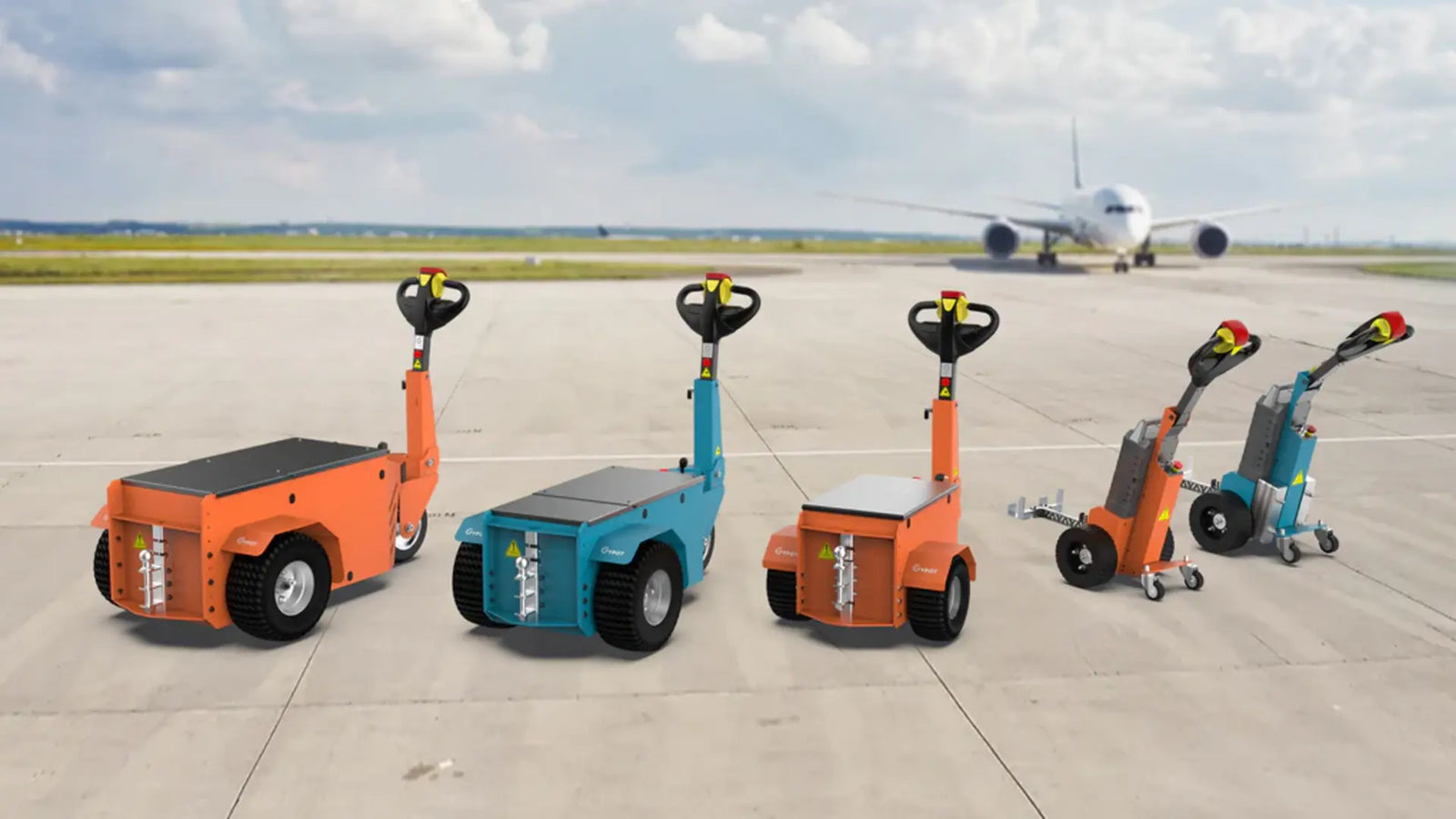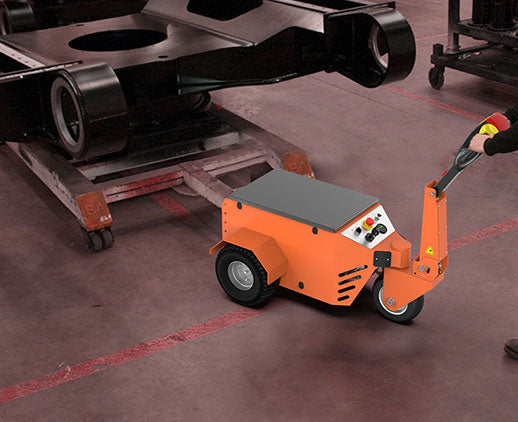Electric Tugger Guide: Reducing Labor and Boosting Productivity

Operating Principles and Types
Electric tuggers feature electric motors and are frequently used in lithium or lead-acid battery-powered electric tug applications. Most regular tasks in factories and warehouses can be performed by the standard electric tugger models which offer a work time of 8-10 hours on a single charge. The rated load for batteries is usually 1 to 5 tons, and heavy-load tuggers can pull up to over 10 tons of materials ideal for factory and logistics center high-intensity long-distance operations.
The electric tuggers are types of material handling equipment and can be further categorized into flat-ground applications and lifting-applications. It can apply to large logistics warehouses with huge flat ground; other means it covers multistory floors, even uneven places, which are suitable for loading and unloading smoothly along the way. Using particular lifting models may save 30 minutes per operation, which also decreases the waiting time derived from manual handling.
Advantages in Reducing Labor
Electric tuggers allow for 3–4 worker applications to be saved when the work is physically demanding, denting your overall labor costs. Naturally, with equipment for moving 300 kg loads, manual labor performs from 5 to 7 operations per hour, whereas power tugs provide up to 15–20 operations per hour, which translates into over twofold increase in efficiency. This innovation is especially efficient in the case of huge factories and warehouses, as it permits to move of a large number of goods in a shorter period.
What makes operating electric tuggers easy is that they usually involve 1-2 hours of basic training, which allows workers to get started right away. This feature decreases the need for a longer training period but also allows new employees to quickly enter into the production flow, continuing to decrease additional labor charges. In mature and large-scale production chains, warehouses or environments where manual labor is easy to control, businesses can at least cut labor costs by 30%, assuming each worker earns a monthly salary of 3,000-4,000 yuan.
Productivity Improvement Solutions
It drastically reduces your labor cost as well as provides more productivity against traditional transport. In a 1000m² warehouse, the material handling time will be reduced by 40% if electric tuggers are introduced in this process; this significantly optimizes the material flow. The devices can also reduce the gap between one work shift and another, reducing idle time by 25%, thus speeding up workflow.
Electric tuggers of a more advanced nature are capable of automatic path planning and intelligent control systems. In automated warehouses, these machines can carry out material movement tasks in predefined paths autonomously to avoid human errors. In some pilot projects, automated electric tuggers have improved productivity by 15 percent, and automation decreases workplace injuries to nearly zero; thus, companies now get a safer and more efficient working environment.
Maintenance and Costs
The purchase of electric tractors, although the higher one-time investment, but operation and maintenance costs in future use are relatively low. Regular maintenance only costs approximately 200 yuan for a common electric tugger, including battery charging and routine maintenance. Further, electric motors usually last for more than ten years and provide operational consistency over the long run. Electric tuggers can be more reliable and suffer longer periods of downtime than traditional internal combustion counterparts.
One of the essential advantages of electric tuggers is energy saving, as compared to their competitors on diesel. On another 8-hour work-shifting day, the daily electricity costs only about 30-40 yuan for an electric tractor with a power consumption rate of 0.5 RMB/kWh. For this, diesel-powered tuggers pay daily fuel fees of 70-80 yuan. Merely by using electric equipment, businesses can reduce their daily energy charges to almost half. This long-term energy-saving effect makes the total operational costs of electric tuggers much lower than traditional equipment in the life cycle.
Selection for Different Scenarios
Electric tuggers of different types and configurations should be tailored to the use application at hand. Large-scale logistics warehouses or factories approaching 2000-3000 m2 are advised to use large electric tuggers with a load capacity of more than 5 tons and excellent battery life. They are able to transport tons of material on a daily basis, transporting hundreds of tons, which means they can increase production and logistics. For small & medium manufacturing enterprises or limited workspaces, electric tuggers with a load capacity of 1-2 tons are better for flexibility. Well, these machines are very effective in executing operations within or limited spaces that too with an ease by automating the small factories material handling processes.
A medium-sized factory manufacturing automotive parts was able to save time for internal transportation by 50% while raising the efficiency in monthly production by somewhere around 20% after they deployed small electric tuggers. However, the large logistics centers in which these electric tuggers are used tend to be better suited for large models with automatic navigation systems that allow high-efficiency long-distance material transport while reducing manual handling errors (and therefore increasing operational precision).













